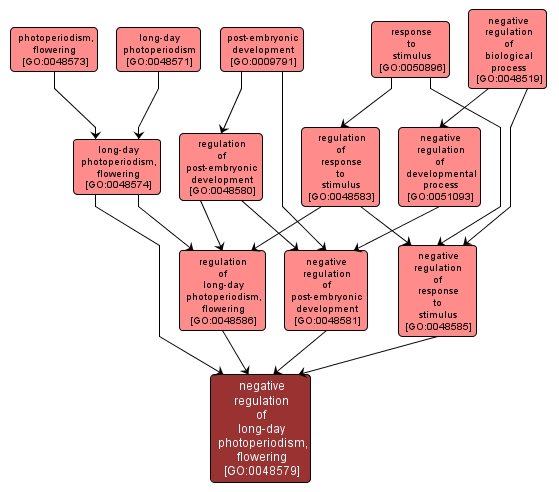GO TERM SUMMARY
|
| Name: |
negative regulation of long-day photoperiodism, flowering |
| Acc: |
GO:0048579 |
| Aspect: |
Biological Process |
| Desc: |
Any process that stops, prevents or reduces long-day photoperiodism, where the response associated with the photoperiodism is flowering. Flowering is defined by the switch from the vegetative to the reproductive phase. |
Synonyms:
- down regulation of long-day photoperiodism, flowering
- down-regulation of long-day photoperiodism, flowering
- downregulation of long-day photoperiodism, flowering
- inhibition of long-day photoperiodism, flowering
|
|

|
INTERACTIVE GO GRAPH
|














